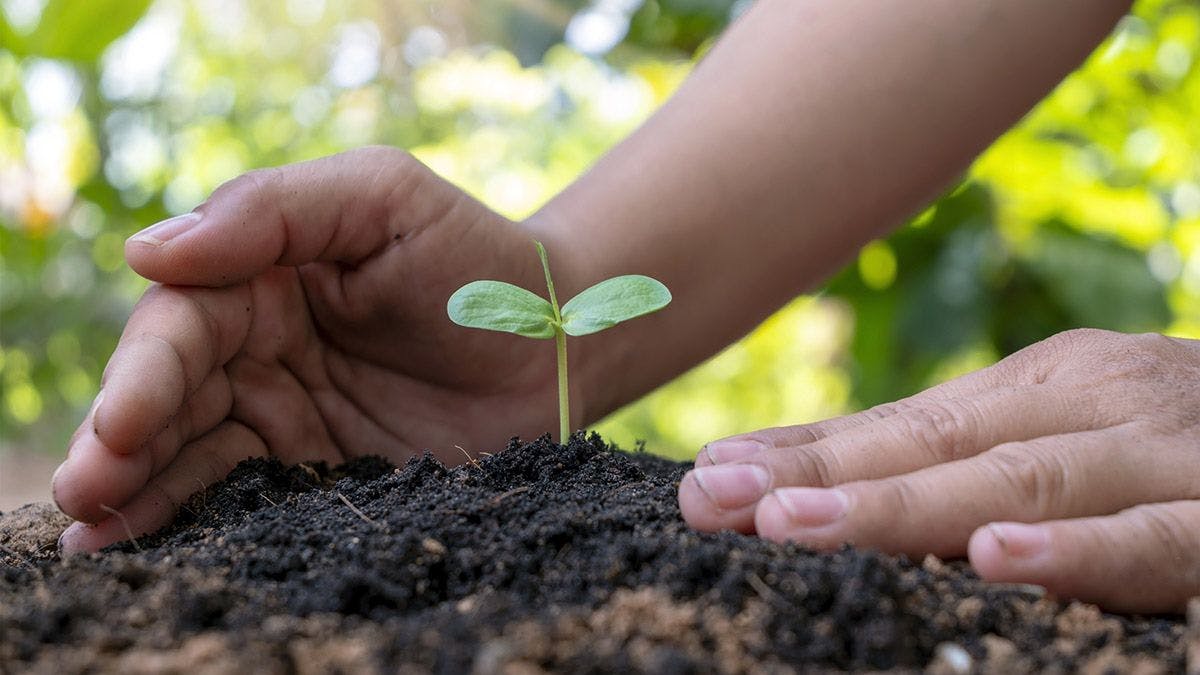
When should I move my plants into bigger pots?
Healthy garden plants typically need to be re-potted and given fresh soil every 12-18 months, depending on the plant type and how actively they have grown. Spring is the best time to re-pot ahead of the growing season, but exceptions can be made when needed.
If you see one or a combination of these signs, you will know it is time to re-pot:
1. Soil that dries out quickly after watering or that looks degraded
2. Roots are visible or pushing the plant up or coming out of the drainage holes
3. Water is sitting on the surface too long after watering.
4. Often the surest sign is the plant just looks top-heavy as it might burst out of the pot or fall over.
Look out for roots coming out of the bottom of the pot; this is sure sign your plant is ready for a re-pot.
When should I feed my plants?
Feed plants in Spring and Summer during the growing season; to promote good healthy plant growth. Few plants need feeding during winter – even those that flower over the cold months. Always follow the plant feed advice for feeding frequency. As a general rule of thumb, feed plants once every 2 weeks in Spring and weekly for plants thriving during the summer to twice weekly for heavy feeders and plants growing in containers.
The difference in sprouts given fertiliser (on the left) and plants are grown without.
Am I watering my plants enough? Or not enough? Am I drowning my plant?! How can I tell?
The first step is to check whether your plant is looking healthy. If it has rich green leaves and stems, chances are you are doing a great job – hurrah. To check how hydrated your plant is, poke your finger in the soil, reaching 2-3 inches down. If dry, it is time for a good dousing. We also encourage good drainage and avoid plants sitting in water as their roots hate being waterlogged.
My plant has a few brown leaves but otherwise looks healthy. Should I take them off?
If browning leaves come off without any pressure, go ahead and clear any dead foliage. If they feel secure, leave them be and let the plant draw out any goodness left in the leaves before it inevitably will come off by itself.
How late can I plant new perennial plants in my garden?
Autumn and Spring are the ideal time to plant new perennial plants. It gives them enough time to establish roots underground before experiencing harsh conditions like the sun drying the soil in summer or the ground freezing in winter. Don’t be disheartened if the plant shrinks back in winter; as long as there is foliage, they will be able to send out new roots until the ground freezes.
Plant out your perennials before the ground freezes or dries out.
I’ve moved my plant to its new home, but how can I be sure it is doing OK?
We’ve all been there, planting out beloved seedlings into new garden spots that we think will be perfect; then the plant throws a fit. The best way to ensure the plant is happy in the new location is to keep an eye on it in the first couple of weeks, water and make sure the plant doesn’t have extra stresses like water-logging or drought. Then sit, wait and see and hope for flowers come springtime.
My new sprouts from this year haven’t flowered. Have I done something wrong?
There are common reasons why a plant doesn’t sometimes flower. Check out the below to put your mind at ease:
1. Age - the plant is simply too young and often can take up to 2-3 years to hit maturity and flower. Also, some biennials only flower every other year.
2. Environment – if a plant is kept in a shady location, it often will not flower to conserve energy.
3. Cold weather - having too many cold spells can kill off flower buds.
4. Poor pollination – lack of pollinators can discourage blooms, so ensure to plant nectar-rich flowers in your garden.
5. Nutrient overload – too much nitrogen in the ground can cause beautiful leaves but no flowers. Equally, too little phosphorous will result in little to no flowering on plants.
6. Pruning – too much pruning can cause a lack of growth and flowers for the year ahead.
Echinacea can take up to two years to reach maturity and bloom.